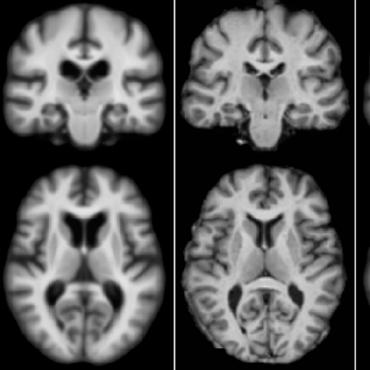Reliable brain morphometry from contrast‐enhanced T1w‐MRI in patients with multiple sclerosis
Brain morphometry is usually based on non-enhanced (pre-contrast) T1-weighted MRI. However, such dedicated protocols are sometimes missing in clinical examinations. Instead, an image with a contrast agent is often available. Existing tools such as FreeSurfer yield unreliable results when applied to contrast-enhanced (CE) images. Consequently, these acquisitions are excluded from retrospective morphometry studies, which reduces the sample size. We hypothesize that deep learning (DL)-based morphometry methods can extract morphometric measures also from contrast-enhanced MRI. We have extended DL+DiReCT to cope with contrast-enhanced MRI. Training data for our DL-based model were enriched with non-enhanced and CE image pairs from the same session. The segmentations were derived with FreeSurfer from the non-enhanced image and used as ground truth for the coregistered CE image. A longitudinal dataset of patients with multiple sclerosis (MS), comprising relapsing remitting (RRMS) and primary progressive (PPMS) subgroups, was used for the evaluation. Global and regional cortical thickness derived from non-enhanced and CE images were contrasted to results from FreeSurfer. Correlation coefficients of global mean cortical thickness between non-enhanced and CE images were significantly larger with DL+DiReCT (r = 0.92) than with FreeSurfer (r = 0.75). When comparing the longitudinal atrophy rates between the two MS subgroups, the effect sizes between PPMS and RRMS were higher with DL+DiReCT both for non-enhanced (d = −0.304) and CE images (d = −0.169) than for FreeSurfer (non-enhanced d = −0.111, CE d = 0.085). In conclusion, brain morphometry can be derived reliably from contrast-enhanced MRI using DL-based morphometry tools, making additional cases available for analysis and potential future diagnostic morphometry tools.
PDF Abstract





